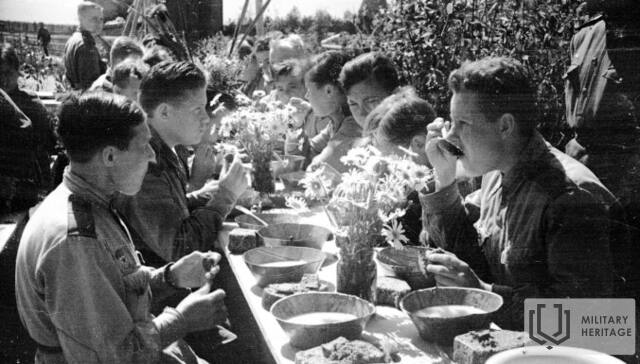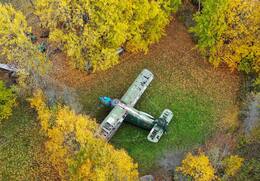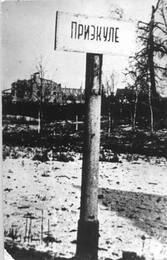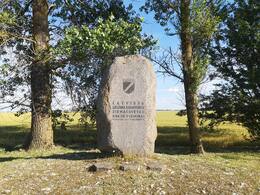Jūlijaus Bērzinio liudijimas apie Raudonosios armijos 201-ąją (43-iąją gvardijos) Latvijos šaulių diviziją 1942–1945 m.

2011 m. rudenį aptikau Rusijoje gyvenančio latvio, buvusio Raudonosios armijos 201-osios (43-iosios gvardijos) Latvijos šaulių divizijos (toliau – 201-oji Latvijos šaulių divizija; divizija) kareivio Jūlijaus Bērzinio (1900–po 1963 m.) memuarus – 189 puslapių apimties istoriją, ranka rusų kalba parašytą dviejuose linijuotuose sąsiuviniuose Latvijos kareivio apie savo patirtį Vokietijos ir SSRS kare (1941–1945). Šie memuarai taip pat nebuvo užsakomieji darbai.
1944 m. gruodžio 23–28 d. 130-asis Latvijos šaulių korpusas kovojo mūšiuose prie Džūkstės prieš 19-ąją Latvijos legiono diviziją. Gruodžio 31 d. vyko mūšiai Karmačių apylinkėse, 1945 m. vasarį – prie Zvārdės, o 1945 m. kovą 130-asis Latvijos šaulių korpusas buvo perkeltas į rezervą. Jis buvo sutelktas Blīdenėje (netoli Saldaus) ir platesnėje apylinkėje, kur kovo mėnesį vykdavo reguliarūs mūšiai. Pažymėtina, kad kovo 4 d. prasidėjusį mūšį prie Blīdenės galima apibūdinti kaip „atsidūrimą kakta į sieną“. Tęsėsi tai, kas jau buvo prasidėjusi 1941 m. gruodį per mūšius dėl Maskvos – Latvijos kareiviai buvo paskirti kovoti praktiškai beviltiškame fronto sektoriuje. Mūšiai prie Blīdenės truko mėnesį.
1945 m. gegužės 8 d. – karo pabaigos dieną, 130-asis Latvijos šaulių korpusas buvo dislokuotas Imulos upės pakrantėje.
1947 m. kovo mėn. divizija buvo pertvarkyta į 29-ąją atskirąją gvardijos Latvijos Rygos šaulių brigadą, 1950 m. birželį – į 43-iąją gvardijos Latvijos šaulių Rygos diviziją, tačiau 1956 m. gegužės–birželio mėn. divizija ir jos daliniai buvo išformuoti.
Iš tiesų, visam 201-osios Latvijos šaulių divizijos kovų laikotarpiui buvo būdingas ir vadovaujančio personalo trūkumas, ir dideli personalo nuostoliai mūšio laukuose bei vėlesni sunkumai jį papildant, ypač Latvijos kariais. Tai radikaliai pakeitė divizijos nacionalinę sudėtį, sukeldamas divizijos vadų, ypač Veikino, nepasitenkinimą.
JULIJOS BĒRZINĀS ASMENYBĖ
Vienintelis informacijos šaltinis apie Julijaus Bērzinio asmenį yra tai, ką jis pats pasakoja apie save savo memuaruose. Julijus Bērzinis yra rusų kilmės latvis, tikriausiai gimęs Žemutinis Naugarde (nuo 1932 iki 1991 m. Gorkyje), kur gyveno iki pašaukimo į 201-ąją Latvijos šaulių diviziją. Tikriausiai gimė Latvijos teritorijoje ir evakuotas į Rusiją po Pirmojo pasaulinio karo pradžios 1914 m. Gimė 1900 m. Dalyvavo Rusijos pilietiniame kare, tačiau nežinoma, kiek laiko ir kuriame fronto sektoriuje. Prieš prasidedant Vokietijos-SSRS karui, jis dirbo Gorkyje, Vandens ir nuotekų tresto ekonomikos skyriuje, buhalteriu. 1942 m. gegužės 25 d. jis buvo pašauktas į Raudonąją armiją, išsiųstas į 1-ąjį atskirąjį Latvijos šaulių rezervinį pulką, o baigęs mokymus, paskirtas į 201-osios Latvijos šaulių divizijos 191-ojo pulko 1-ąjį batalioną, kulkosvaidžių kuopoje. 1943 m. pavasarį Bērziņš jau turėjo eilinio laipsnį; karo metu jis galėjo būti paaukštintas, nes jo memuaruose minima, kad karo pabaigoje jis buvo šaudmenų tiekimo (būrio) vadas. Iš jo memuarų neaišku, ar jis kentėjo per 1937–1938 m. represijas Rusijoje, ir to nepatvirtina SSRS politinio teroro metu suimtųjų ir nubaustų asmenų duomenų bazės. Galimą Bērzinio ryšį su represijomis liudija atvira 1937–1938 m. įvykių ir pasekmių kritika, būdinga jo memuarams.
1942 m. rugsėjį, per Tuganovo mūšį, Bērziņš buvo sužeistas, po to tris mėnesius praleido karo ligoninėse, kol tų pačių metų gruodžio 15 d. vėl pateko į Gorohoveco stovyklą 1-ajame atskirajame Latvijos šaulių rezervo pulke. Po mokymų, 1943 m. kovo pabaigoje, jis grįžo į 201-ąją Latvijos šaulių diviziją, šį kartą – į 121-ąjį gvardijos Latvijos šaulių pulką. Ten jis tarnavo ir kulkosvaidžių kuopoje, ir dėl amžiaus buvo perkeltas į ūkio būrį, kur tarnavo iki karo pabaigos. Po karo gyveno Maskvoje.
Savo memuarus jis pradėjo rašyti 1942 m. birželį ir, nors mini tik 1942 ir 1943 metus, autorius apžvelgia ir 1944 bei 1945 metų įvykius. Bērziņš rašo ne tik apie įvykius, kuriuose pats dalyvavo, bet ir pateikia praeities vertinimą. Sunku spręsti, ar autorius turi fenomenalią atmintį, ar naudojasi geromis knygomis, tačiau kartais jis pateikia išsamią įžvalgą apie skirtingus Rusijos istorijos etapus.
Atsiminimai yra naujas, anksčiau neskelbtas liudijimas apie 201-ąją Latvijos šaulių diviziją ir tai, ką jie matė kare. Atsiminimų vertę lemia autoriaus apskritai objektyvūs vertinimai (juos galima nustatyti greta informacijos iš kitų šaltinių, įskaitant oficialius dokumentus) ir detalės, kurių nėra kituose šaltiniuose ir kurios papildo atskirus įvykius. Atsiminimai pateikia bendrą divizijos padėties vaizdą, kai karo baigtis jau buvo žinoma. Tai rodo autoriaus vertinimai apie praeities įvykius arba kokius veiksmus reikėjo atlikti, kad būtų pasiekta kitokia baigtis.
Šiam leidiniui atrinkti ir išversti atskiri Bērzinio prisiminimų fragmentai. Neįtrauktos dalys, kuriose aprašomi „sausi“ kariniai įvykiai, tačiau įtrauktos tos, kurios leidžia sekti „gyvo“ kareivio stebėjimus santykiuose: kareivis – vadas, kareivis – kiti kareiviai, kareivis – pareigos, kareivis – įvykiai.
Ilze Jermacāne "Julijos Berzins liudijimas" LVIZ 2012 m
https://www.lvi.lu.lv/fileadmin/user_upload/lu_portal/lvi.lu.lv/LVIZ_Numuri/2012_2/I_Jermacane_Julija_Berzina_liecibas_LVIZ_2012_2.pdf
„Latviai nuo kulkų nedreba“ – ką žinome ir ko nežinome apie latvius Raudonojoje armijoje - DELFI
https://www.delfi.lv/kultura/news/books/latviesi-lodem-neklanas-ko-mes-zinam-un-nezinam-par-latviesiem-sarkanja-armija.d?id=53232121
Jūsų komentarai
Susijusios vietos
Kuržemės tvirtovės muziejus Zante
Bus atidaryta nuo gegužės 1 d.
Kuržemės įtvirtinimų gynėjų atminimo akmuo
Įsikūręs Tukumo rajone, A9 greitkelio pakraštyje, 500 m nuo posūkio į Lesteni Rygos kryptimi.
Memorialas buvo įkurtas 1991 m. netoli Rumbu namų, kurie buvo aktyvių karo veiksmų vieta. Tai duoklė „Kuršo tvirtovės“ gynėjams, kovojusiems su Raudonąja armija Antrajame pasauliniame kare. Mūšiai buvo reikšmingi, nes laikinai sustabdė Raudonosios armijos įvykdytą visišką Latvijos okupaciją. Maždaug 300 000 latvių emigravo, bėgdami nuo sovietų režimo įvykdytų nusikaltimų prieš civilius gyventojus.
Antrojo pasaulinio karo pabaigoje Latvijos teritorijoje susiklostė savotiška situacija. Kurše buvo dislokuotos Vokietijos armijos pajėgos, kurias Raudonoji armija bandė eliminuoti arba neleisti dalyvauti mūšiuose Rytų Prūsijoje ar aplink Berlyną. „Kuršo tvirtovė“ yra dažniausiai vartojamas terminas, apibūdinantis karo veiksmus Kurše nuo 1944 iki 1945 m. „Kuršo mūšis“ buvo Vokietijos armijos kova, siekiant atremti didžiulius Raudonosios armijos išpuolius. Kuršo tvirtovė nustojo egzistuoti netrukus po Vokietijos kapituliacijos.
Šiandien galite aplankyti memorialą ir poilsio vietą, kuri buvo populiari tarp Latvijos legionierių nuo pat Latvijos nepriklausomybės atkūrimo.
Paminklas Pienavos Kalėdų mūšių aukoms
Įsikūręs Tukumo rajone, A9 greitkelio pakraštyje, maždaug už kilometro nuo Pienavos Liepojos kryptimi.
Memorialas yra Trečiojo Kuršo mūšio, arba Kalėdų mūšio, vietoje, vykusio 1944 m. Antrojo pasaulinio karo pabaigoje Latvijos teritorijoje susidarė unikali situacija. Kurše buvo vokiečių armijos pajėgos, kurias Raudonoji armija bandė eliminuoti arba neleisti dalyvauti mūšiuose Rytų Prūsijoje ar aplink Berlyną. „Kuršo tvirtovė“ yra dažniausiai vartojamas terminas, vartojamas apibūdinti mūšius Kurše nuo 1944 iki 1945 m. „Kuršo mūšis“ buvo vokiečių armijos karinės operacijos, skirtos atremti didžiulius Raudonosios armijos išpuolius. Kuršo mūšiuose aktyviai dalyvavo ir Latvijos legionieriai.
Šiandien galite aplankyti memorialinę vietą. Atviri vietovės laukai be seniausių pastatų yra karo liudininkai.









Apskritai, yra jausmas, kad yra daug prasimanymų ir visokių importinių dalykų, tokių kaip gandai ir panašiai, kurie atsirado po permainų 90-ųjų pradžioje, kai jau formavosi neigiamas požiūris į sovietinę praeitį. Tokiuose prisiminimuose nematau jokios vertės. Tačiau 43-iosios latvių divizijos istorija mane labai domina. Mano tėvas Buikis Peteris skyriuje buvo nuo pat jo formavimo pradžios ir tarnavo iki 1945 m. pabaigos. Paskutinius 2 metus ėjo pavaduotojo pareigas. skyriaus vadas logistikai, t.y. divizijos logistikos vadovas. Aš pats, būdamas 8 metų, buvau tėvo skyriuje Baltezers-Adažyje. Gerai prisimenu, kaip buvo demobilizuojami kariai. Sužeistieji dar buvo gydomi medikų batalione ir kt.